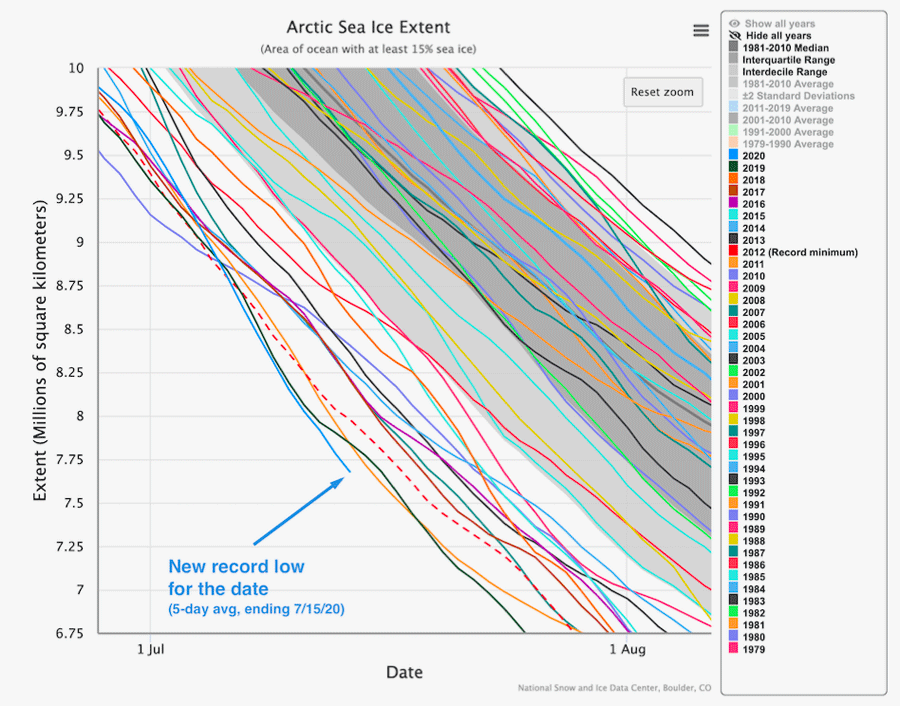Arctic July: "Just The Pattern You'd Like To See If You'd Like To Get Rid Of Ice"

Relentless high pressure and cloud-free skies have allowed the Arctic Ocean’s sea ice to plummet to its lowest mid-July extent on record. The persistent pattern sets the stage for what could be unprecedented losses by September – a long-feared next step in the Arctic’s erratic, climate-change–fueled lurch toward a potential “blue ocean” mode. Early July brought “just the pattern you’d like to see if you’d like to get rid of ice,” said Mark Serreze, director of the National Snow and Ice Data Center. What happens later this summer will hinge in part on whether an entirely different, tough-to-predict ice-destroying mechanism takes shape.
The core of year-round sea ice that extends from the central Arctic to the north coast of Canada has taken a well-publicized beating lately. In the past half century, human-produced greenhouse gases have led to warming that’s unfolding more than twice as quickly across the Arctic as in the entire Northern Hemisphere. As perennial ice retreats, the exposed ocean absorbs more sunlight than the highly reflective ice surface, hastening regional warming.
Arctic ice now just over half of extent typical in 80s
Arctic sea ice extent plummeted to a record low in 2007, stunning even veteran researchers. The crash marked a new era: No minimum since 2007 has managed to stay above pre-2007 values, and an even lower record was set in 2012. In 2019, the minimum extent was the second-lowest on record, in a virtual tie with 2007 and 2016.
The Arctic now experiences little more than half the ice extent in September than what was typical in the 1980s. That’s allowed waves from autumn storms to attack Alaska’s Arctic coast with increasing ferocity, putting villages at risk. The delayed autumn freeze-up across the Bering Sea has left Indigenous communities that rely on snowmobile transport marooned for longer periods.
EDIT
https://www.yaleclimateconnections.org/2020/07/baked-by-midsummer-sun-arctic-sea-ice-could-face-worst-losses-on-record/
